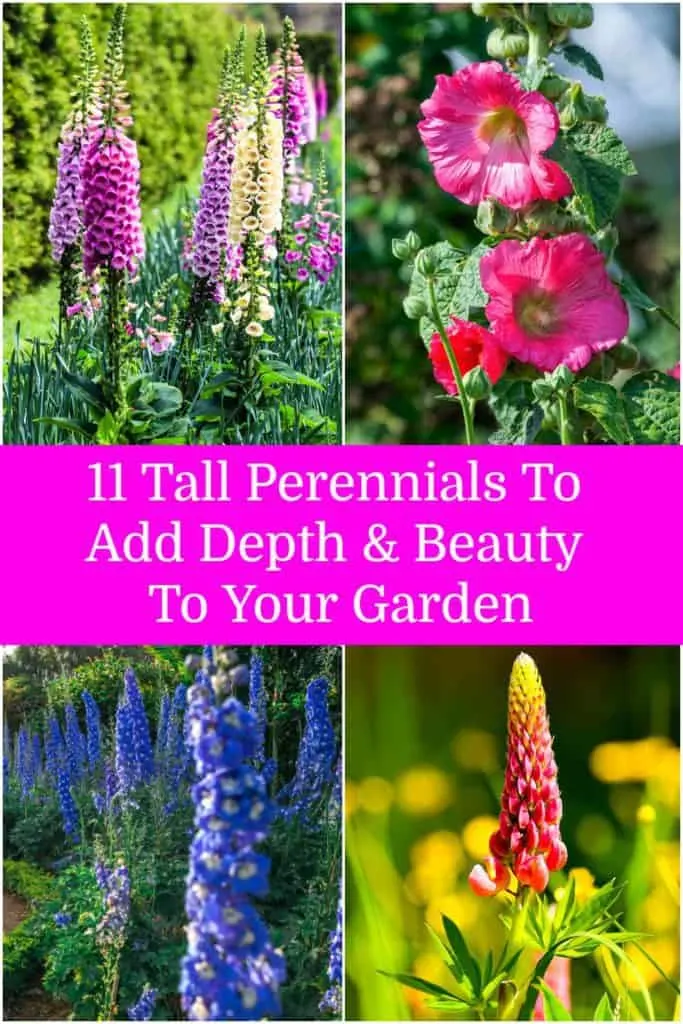
Growing tall perennials is incredibly fulfilling. Because they grow to such high heights, they grow quickly.
Tall perennials are often tough plants that can grow in many conditions. They handle wind and weather and look great doing it.
More than just great looks, tall perennials serve many purposes.
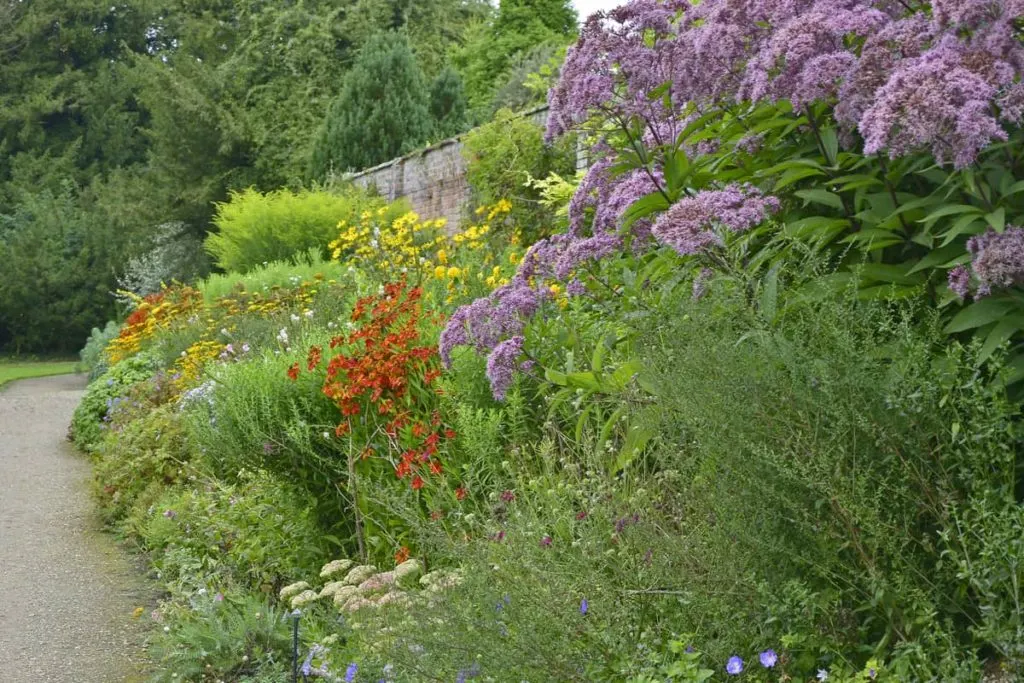
Use Tall Perennials in the Border to Establish Depth and Textural Interest
Put a tight and colorful Garden Phlox among lower growing mounding shaped groundcovers with airy mountains of Goat’s Beard and Feather Reed Grass to establish depth and textural interest.
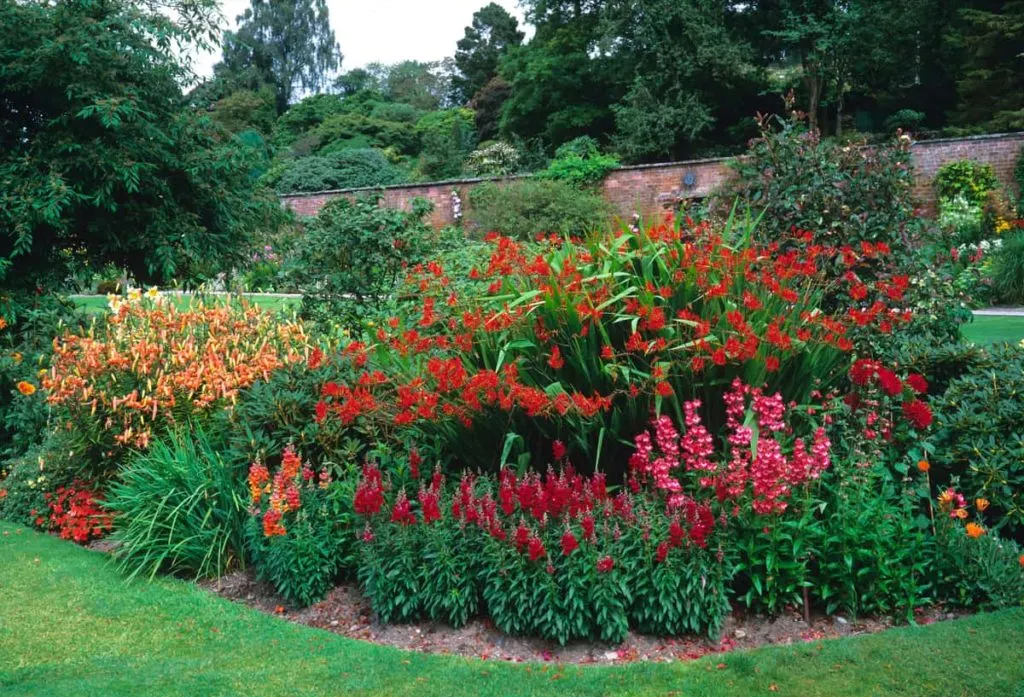
Tall Perennials Make Excellent Screens
Wondering what can be done about that awkward area that holds the exterior parts of the heating and cooling systems of a house. Or the awful old fence in need of repair. Putting a couple of giant, exuberant, beautiful perennials in front of them is a wonderful idea.
Use Tall Perennials Where Trees and Shrubs Might Be Damaged In Winter
Want some spectacular greenery in an area but you need access there during the winter months? Or have you tried beautiful blooming shrubs that get damaged from falling snow and ice during winter?
The great thing about fast growing tall, herbaceous perennials is that they die back to the ground during the winter. With some protection, many can handle heavy snow loads and some may even tolerate a light amount of traffic while they are dormant.
Tall Perennials Can Grow to Become a Living Fence
Delineate an area using tall perennials, to make a border, or create privacy between two areas. Here are some ideas.
- You might put up a row of sweet-smelling phlox between where the kids play and where the adults enjoy a cocktail.
- Surround the outdoor BBQ with waves of hollyhock and foxglove.
- Grow a row or two of tall and gorgeous Queen of the Prairie and Meadowsweet to block the view from your neighbor’s dog who barks at you every time you open the back door.
Use Tall Perennials to Discourage Garden Pests
When I’m in the garden, I don’t want to feel like I’m in a cage, so I refuse to put up deer fencing. For years, I’ve grown deer-resistant tall perennials around my vegetable garden to keep the deer out of my veggies. This works incredibly well, even though I’m in a high-deer-traffic area.
I use a combination of monkshood and delphinium, which are described below, mixed with lots of spring-blooming naturalized daffodils.
11 Beautiful Tall Perennials
1. Monkshood (Aconitum)
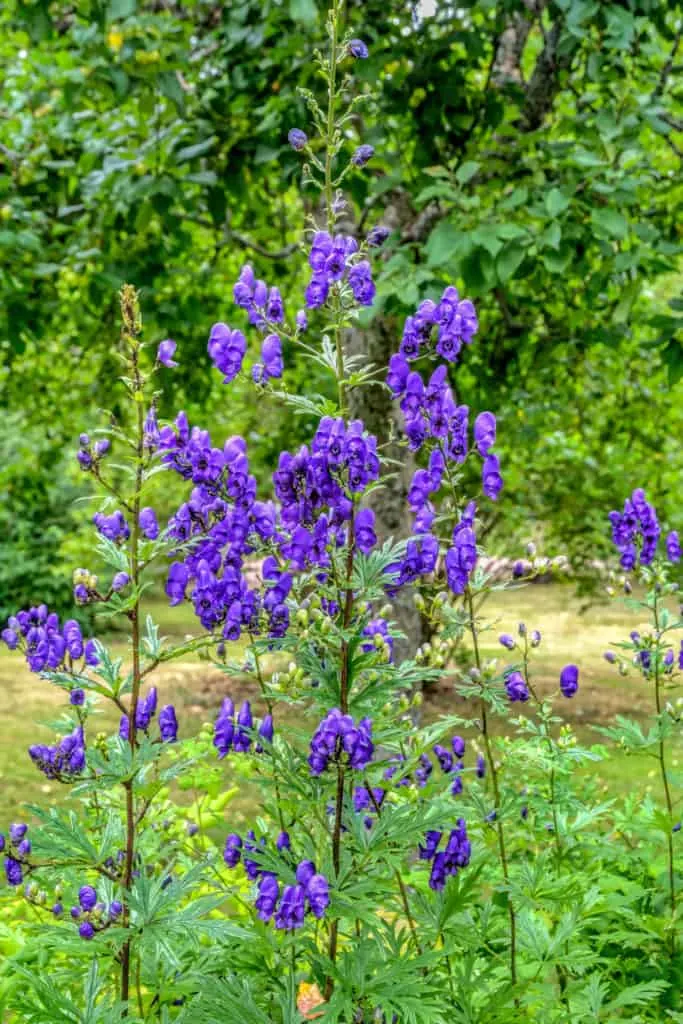
Mature Height: Plants grow 4 to 6 feet (120 to 180 cm) tall.
Bloom: Monkshood blooms mid to late summer. Pinching spent blooms may encourage more blooms.
Hardiness Zones: Hardy in zones 3 through 8.
Soil & Sun: Monkshood prefers rich, well-drained, consistently moist soil. It can handle partial shade and continue to bloom.
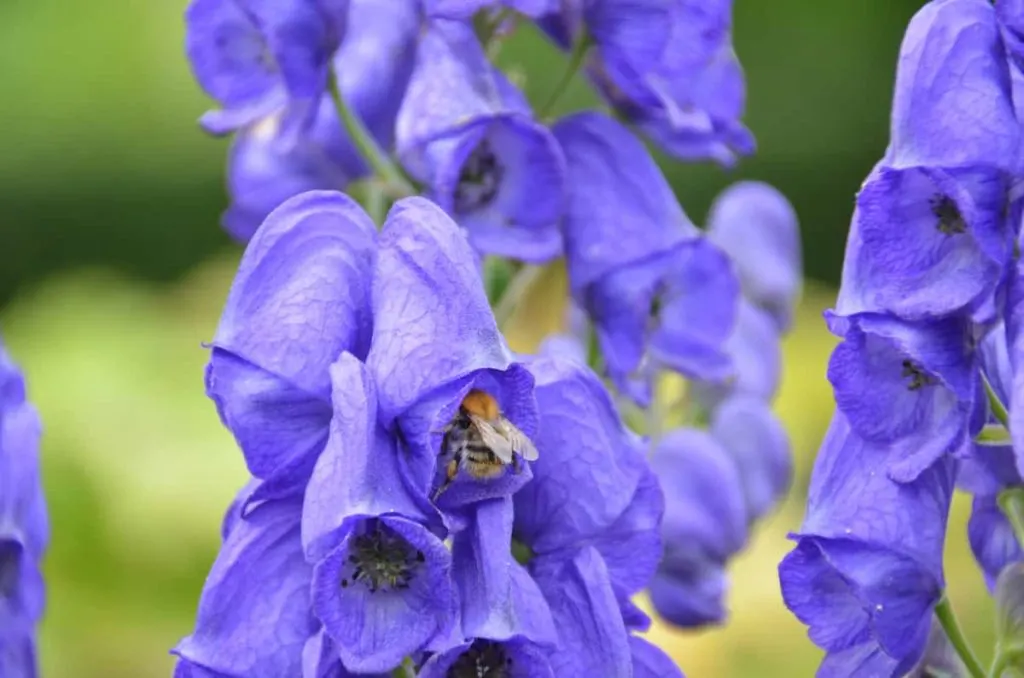
Special Notes: Quite low maintenance and may even naturalize over an area. Easy to divide and may also spread through seed. Foliage is deeply lobed, glossy green, and palmate. It contrasts nicely as a backdrop to grassy looking plants such as daylilies.
In my garden, it tolerates high winds and doesn’t require staking. All plant parts are poisonous.
2. Joe Pye Weed (Eutrochium purpureum)
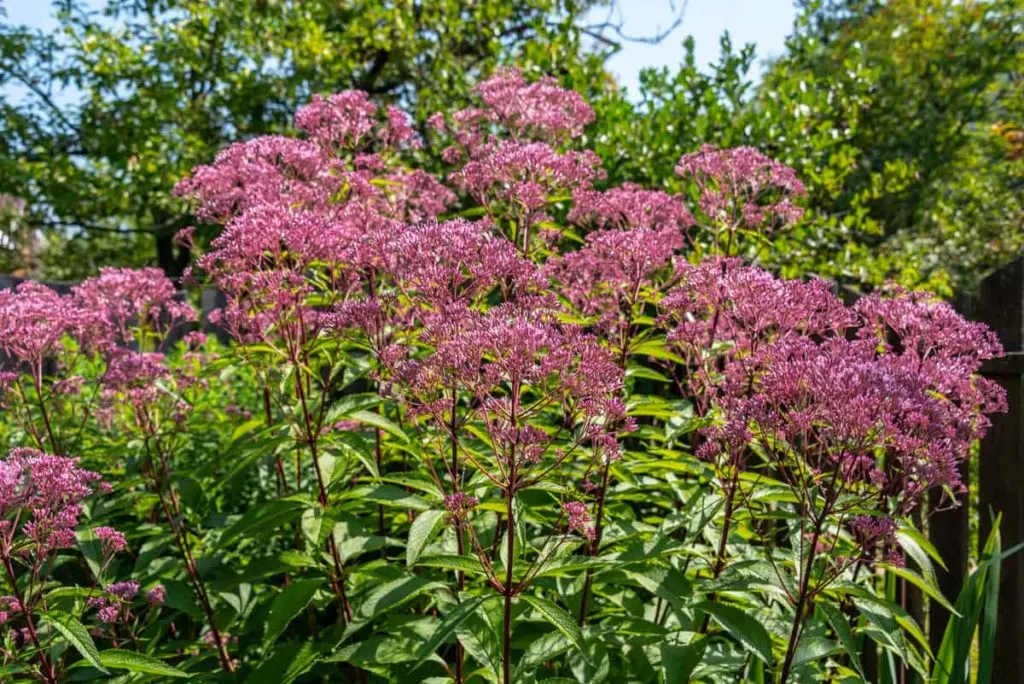
Mature Height: Plants grow 4 to 7 feet (120 to 210 cm) tall.
Bloom: Showy, fragrant, dome-shaped, pink/mauve flower plumes bloom in late summer, July through September.
Hardiness Zones: Hardy in zones 4 to 9.
Soil & Sun: A moisture-loving plant, plant in an area that will be consistently moist in rich soil in full sun to partial shade.
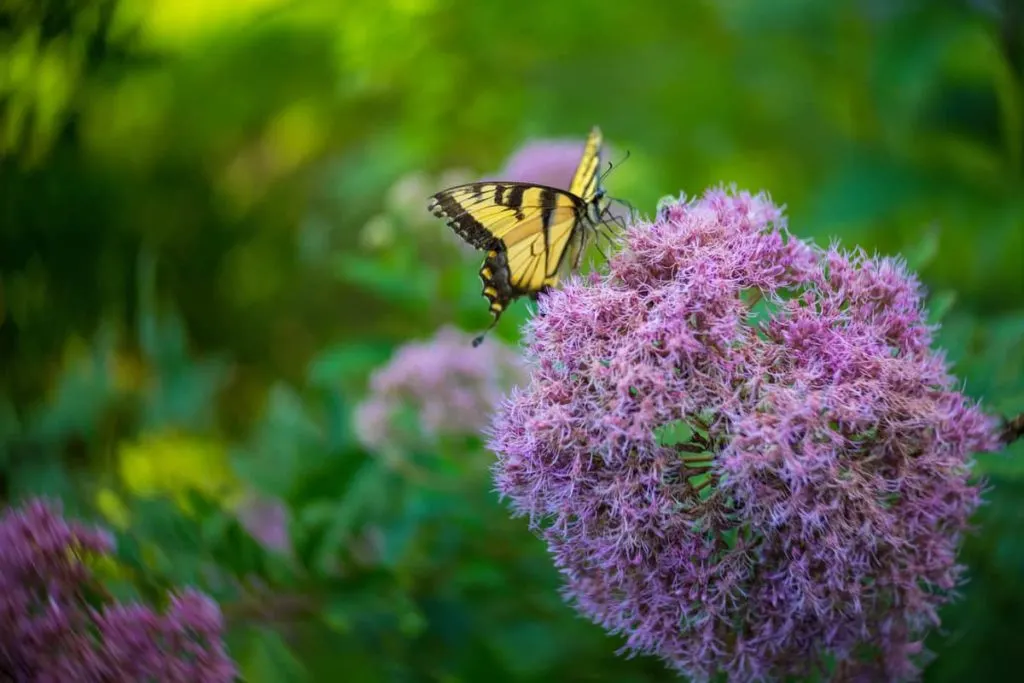
Special Notes: A native plant that is favored by butterfly species. The flowers are vanilla scented and spent flowers are attractive and persist through winter.
3. Valerian (Valeriana officinalis)
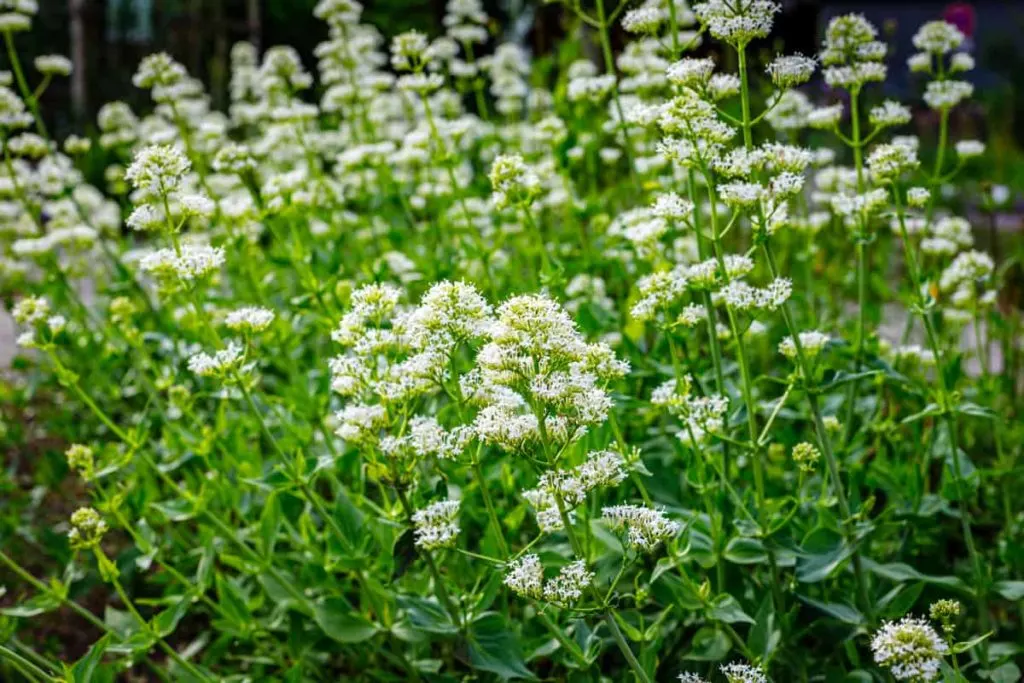
Mature Height: Plants grow 5 feet (150 cm) tall.
Bloom: Blooms are white to pale pink and bloom in late spring and early summer, June to July.
Hardiness Zones: Hardy in zones 4 to 7.
Soil & Sun: Valerian loves full sun and moist conditions. An easy to grow plant that is invasive in some states. In the right conditions, it will naturalize readily.
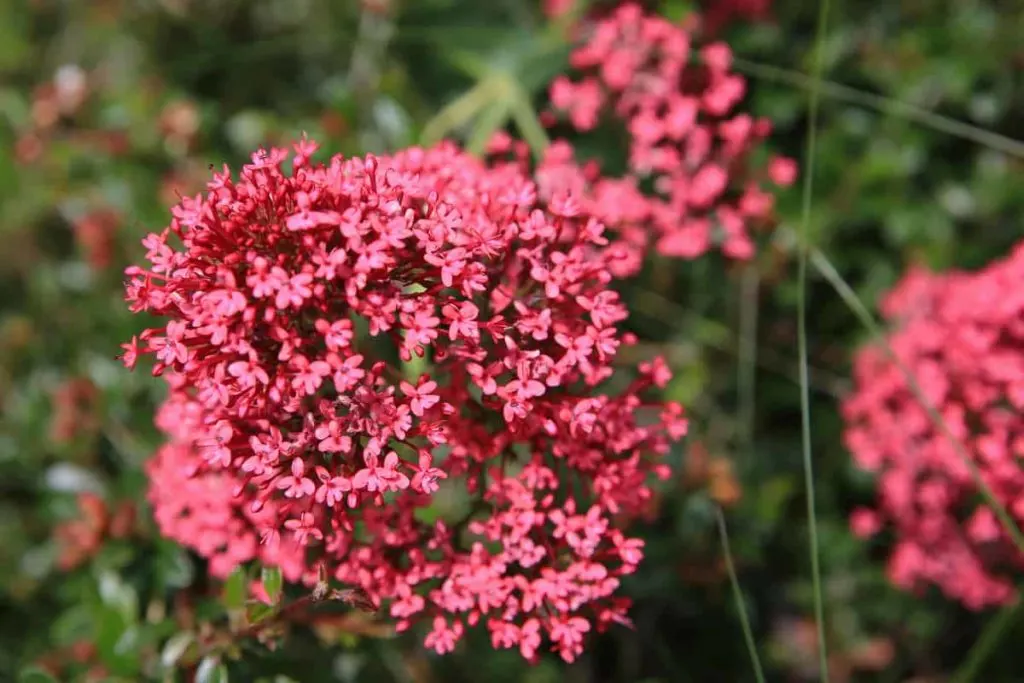
Special Notes: The flowers and leaves of this plant are fragrant. Lovely in the perennial border and the herb garden. Valerian has been used for centuries in herbal medicine to help treat sleep and anxiety issues.
4. Delphinium (Delphinium elatum)
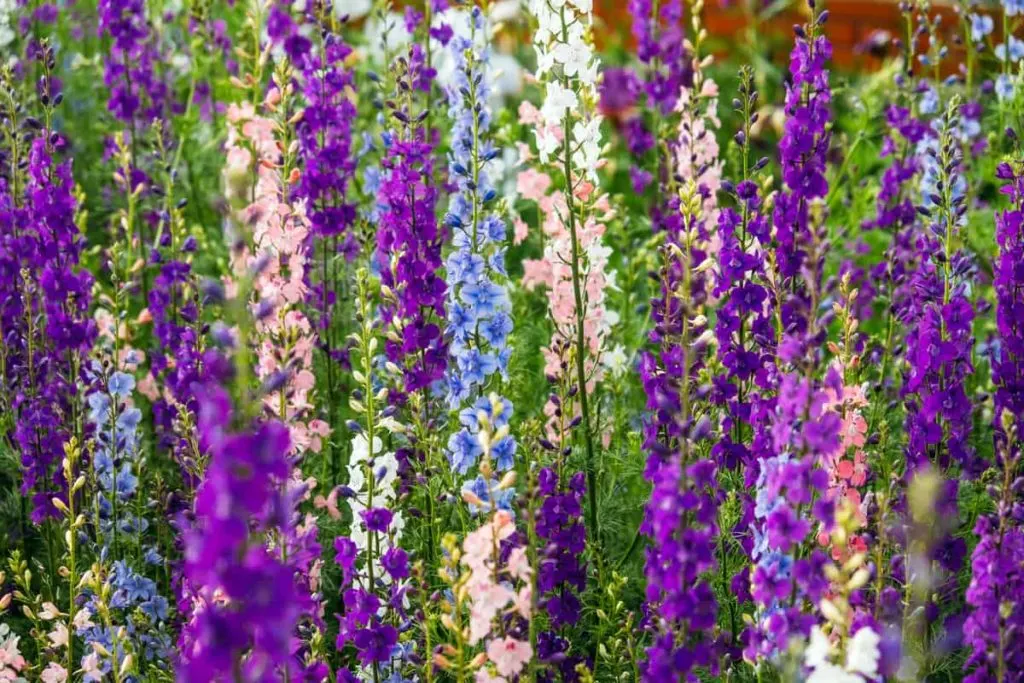
Mature Height: Plants grow 5 to 9 feet (150 to 275 cm) tall.
Bloom: A summer blooming perennial with tall spires of gorgeous blooms June and July. Colors range from white through royal blue with cultivars in many shades of pinks and purples. Cutting off spent blooms may encourage more blooms.
Hardiness Zones: Grows well in zones 3 to 7.
Soil & Sun: A perennial favorite in alkaline soils that are moist and well-draining. Prefers full sun and benefits from staking.
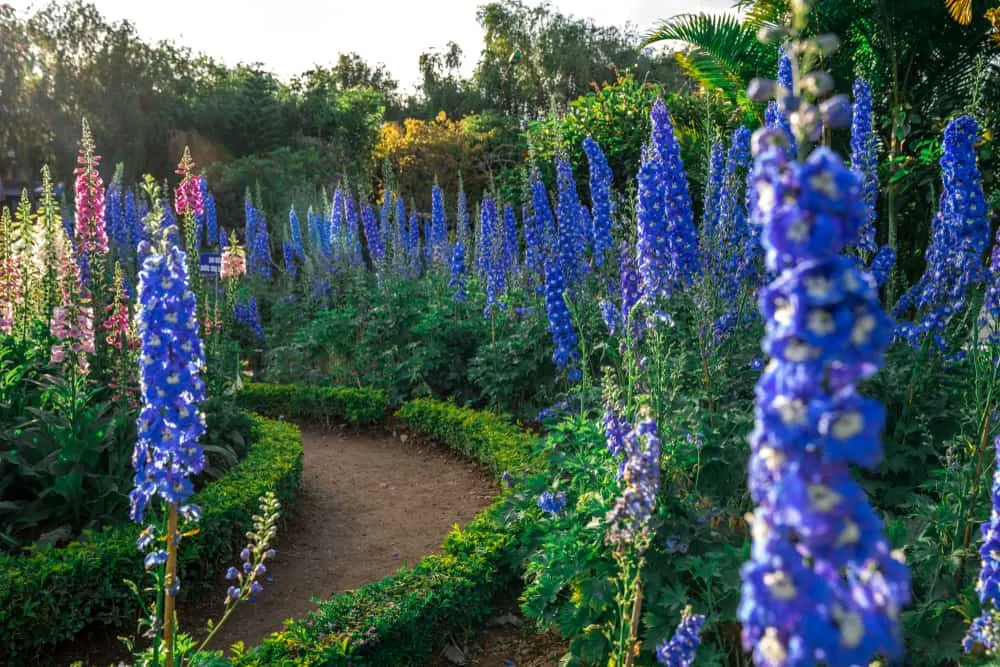
Special Notes: A beautiful, long lasting cut flower that has little scent. It is deer resistant and loved by bees.
5. Lupin (Lupinus)
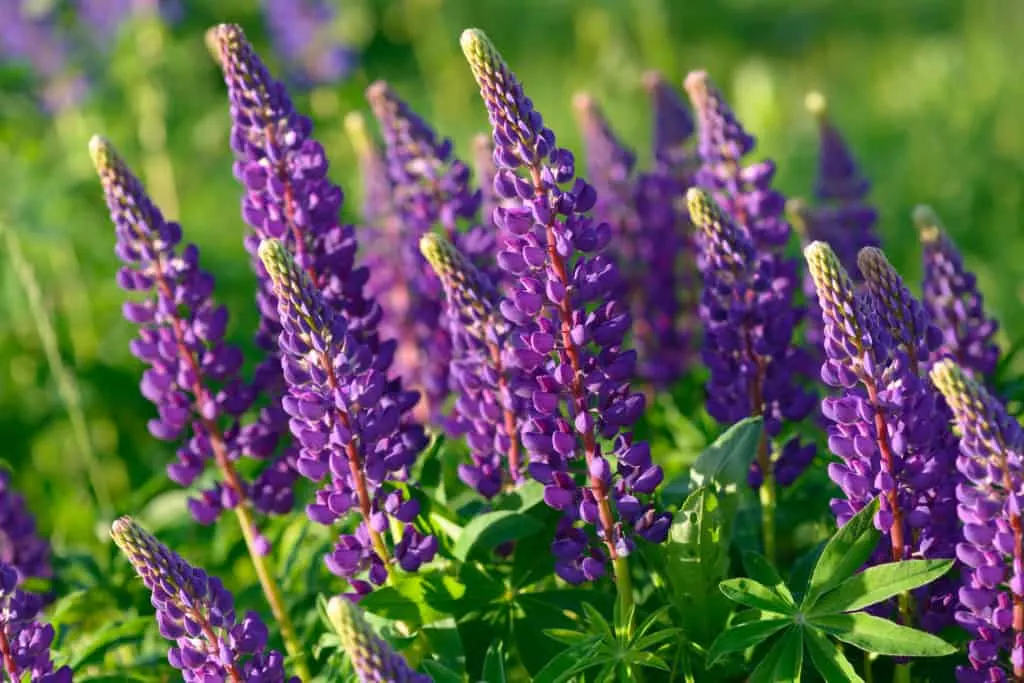
Mature Height: Plants grow 3 to 4 feet (90 to 120 cm) tall.
Bloom: Spires of colorful whorled blooms rise above compound, palmate leaves in shades of purples, blues, whites, and pinks in late spring and early summer. Cultivars may descend to the native blue shades after a few generations.
Hardiness Zones: Hardy in zones 4 to 8.
Soil & Sun: Prefers moist acidic soils in full sun to partial shade.
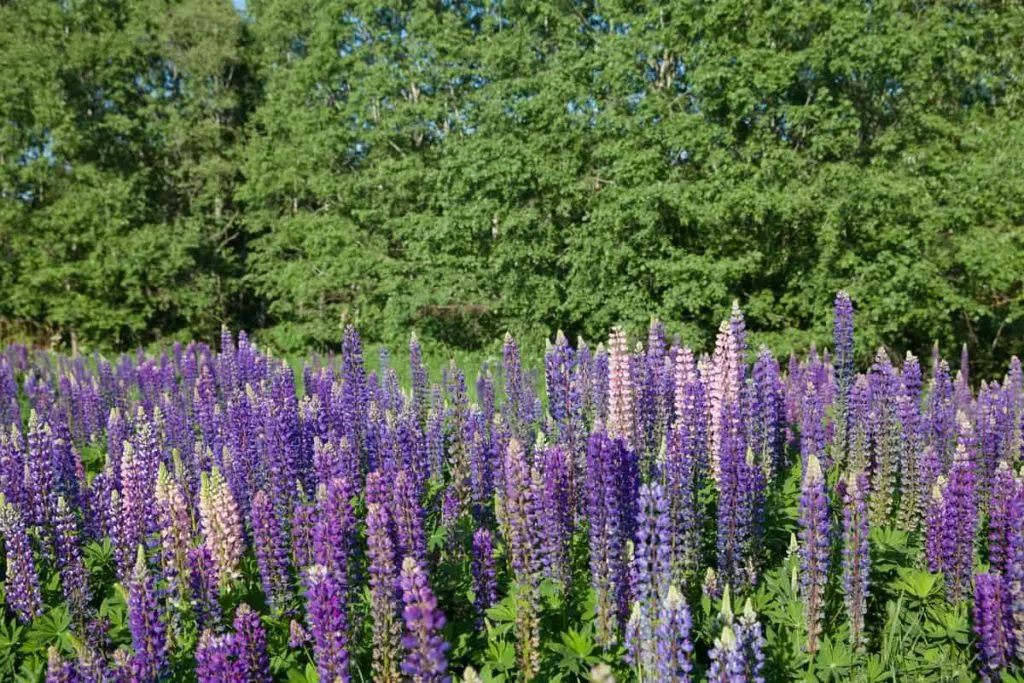
Special Notes: Leaves have a tropical zeal, resembling palm leaves, unique in this cold hardy mountain plant. Lupine is biennial so will bloom in its second year and freely reseeds itself.
6. Foxglove (Digitalis)
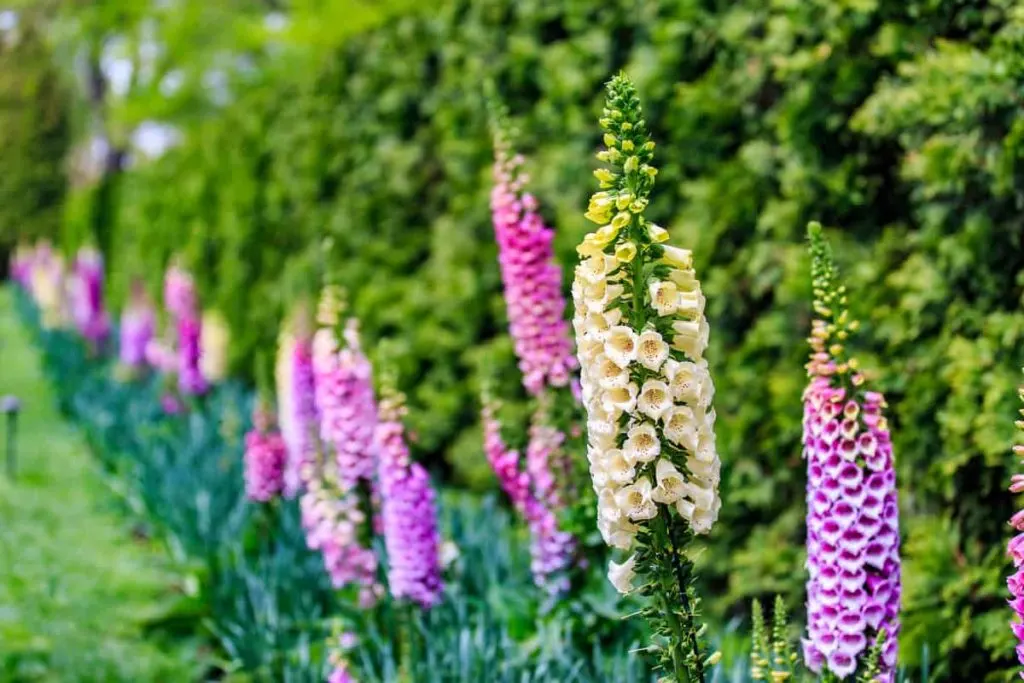
Mature Height: Plants grow 2 to 5 feet (60 to 150 cm) tall.
Bloom: Spikes of tubular, spotted flowers in dense whorls rise on tall stalks above basal leaves in shades of whites, pinks, and reds in late spring.
Hardiness Zones: Is hardy in zones 4 through 9.
Soil & Sun: Tolerates light shade to full sun and soil that is light, high in organic matter, and retains moisture well.
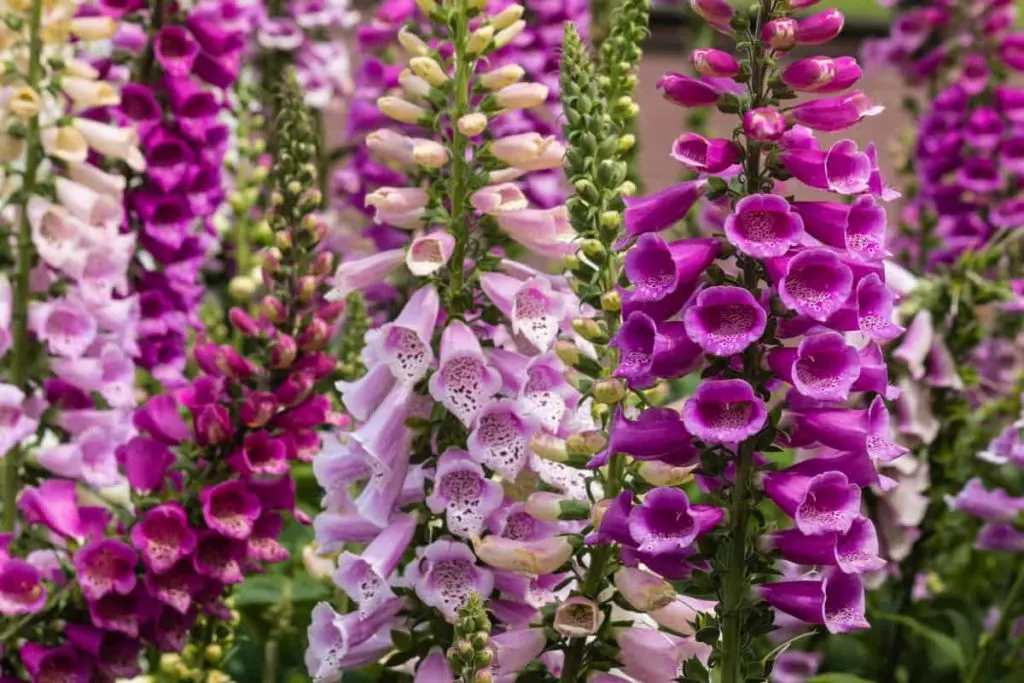
Special Notes: Foxglove is a biennial with many cultivars. One plant can produce a couple million seeds. Allow some flowers to make seed. To lessen the number of potential seedlings, deadhead some of the less spectacular flowerheads.
7. Hollyhock (Alcea)
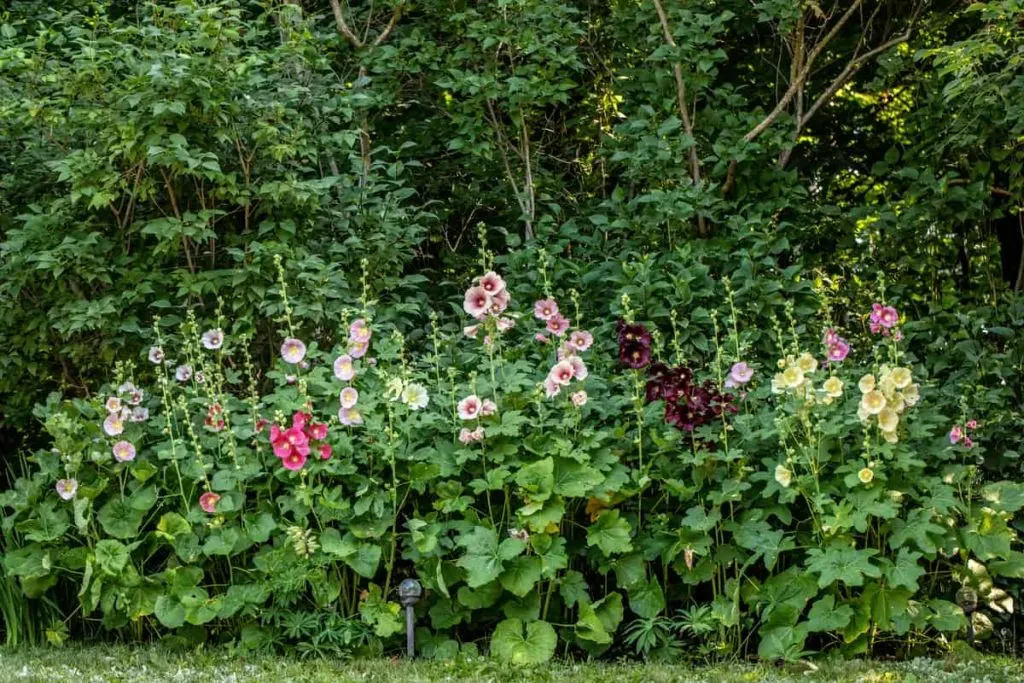
Mature Height: Plants grow 3 to 8 feet (90 to 240 cm) tall.
Bloom Time: Showy, hibiscus-like flowers in pinks, purples, reds, and whites are large and bloom in whorls on tall flower stalks throughout the summer months.
Hardiness Zones: Hardy in zones 2 through 10.
Soil & Sun: Performs best in well-draining soils in full sun. Plants are often strong enough to not require staking.
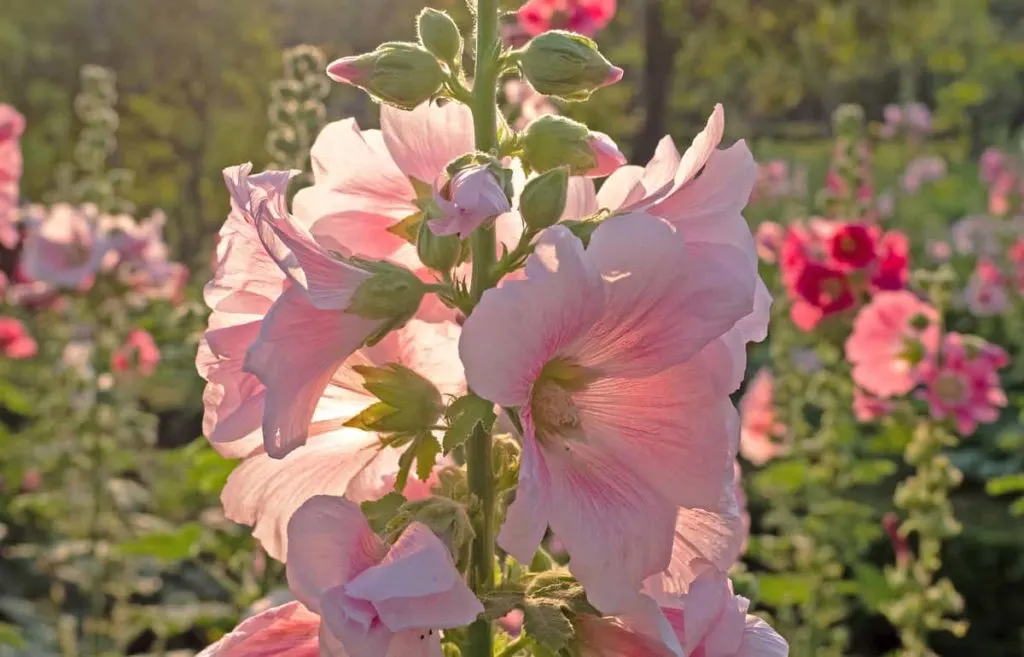
Special Notes: On the higher maintenance side, hollyhocks are biennial, blooming in their second year. They freely reseed themselves and hummingbirds and butterflies are frequent visitors. Leaves are large, heart shaped, and may suffer some damage. It is easy to forgive this characteristic due to hollyhocks’ spectacular flower show.
8. Goat’s Beard (Aruncus dioicus)
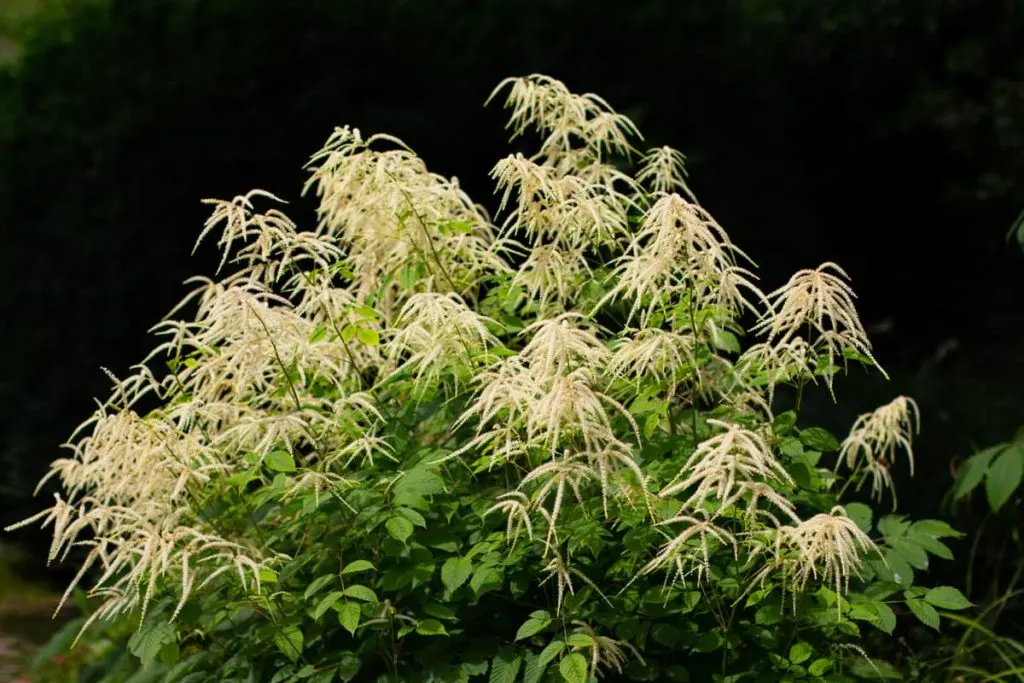
Mature Height: Plants grow to 6 feet (180 cm) tall.
Bloom: White to cream feathery plumes in early to late spring arise on pretty, compound leaves.
Hardiness Zones: Thrives in zones 4 to 8.
Soil & Sun: Goat’s Beard can tolerate moist to wet conditions in full sun to part shade. In hot places, it prefers some shade protection and plants get discouraged in dry conditions.
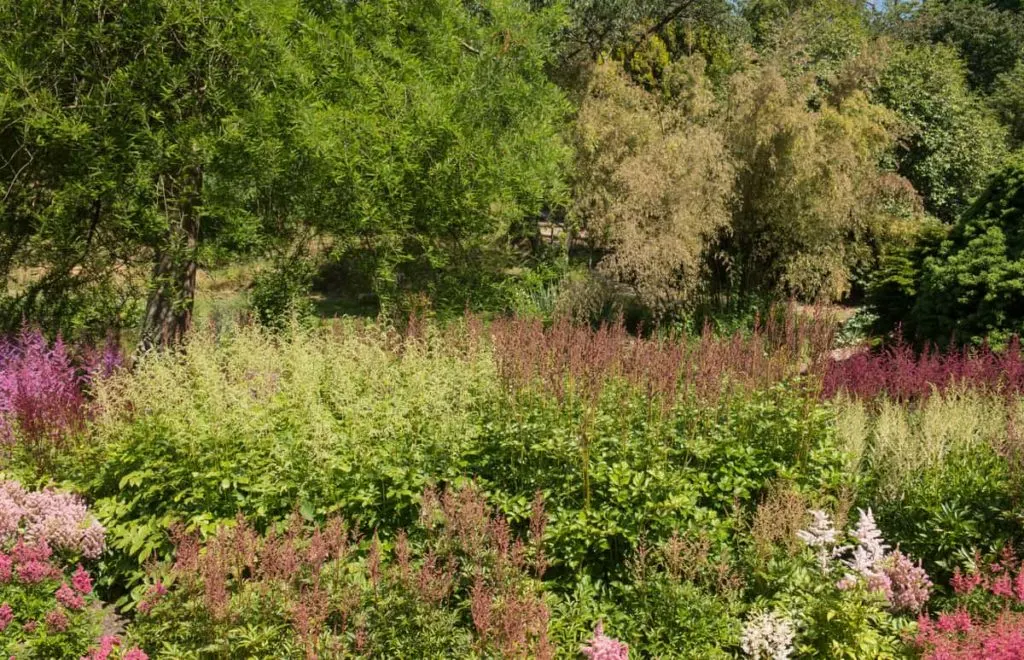
Special Notes: A clump-forming perennial that is native to North America and might be found in moist woodlands.
9. Queen of the Prairie (Filipendula rubra), Meadowsweet (Filipendula ulmaria)
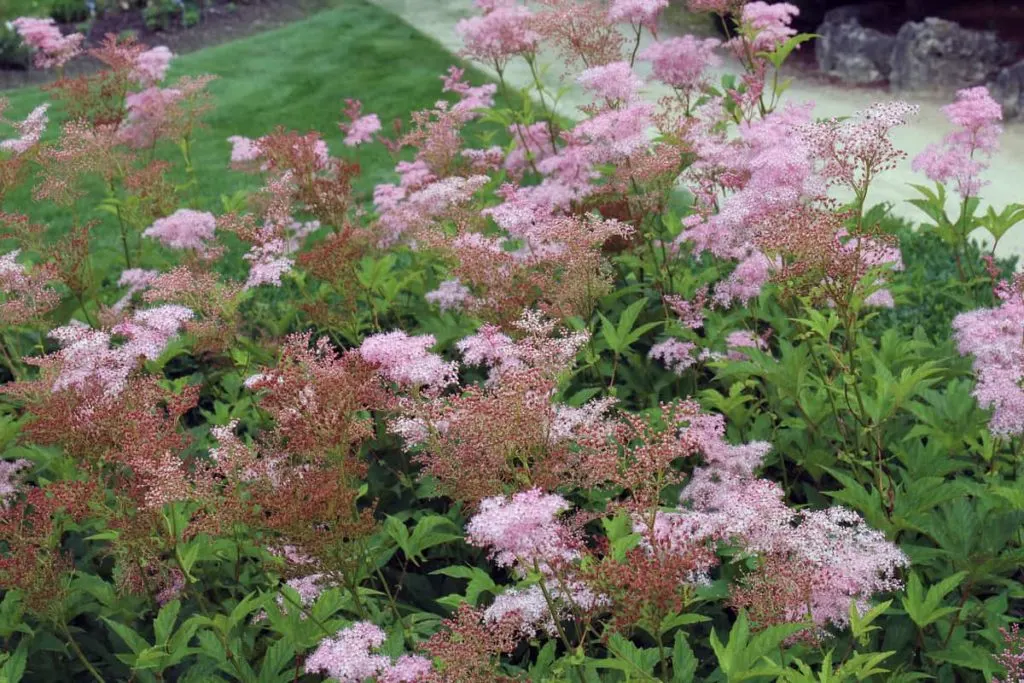
Mature Height: Plants grow 3 to 6 feet (90 to 180 cm) tall.
Bloom: Filipendula translates as filum or thread, and pendula means hanging. The hanging thread fuzzy blossoms are pink to white flowers on these species of the Filipendula genus. The showy and fragrant blooms arrive and persist June through August and range in shades of cream to rose.
Hardiness Zones: Filipendula range in zones 3 to 8.
Soil & Sun: Rich humus soil that is consistently moist allows this plant to freely self seed and may develop into colonies where space allows.
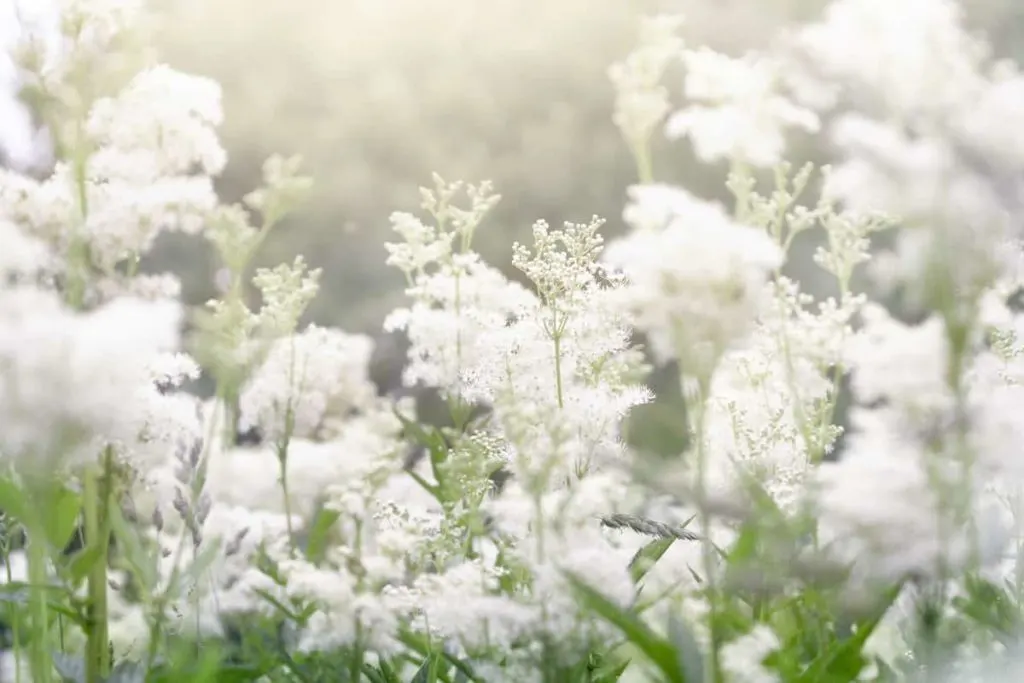
Special Notes: Queen of the Prairie is a North American native and both species have fragrant leaves and blossoms.
10. Phlox (Phlox paniculata)
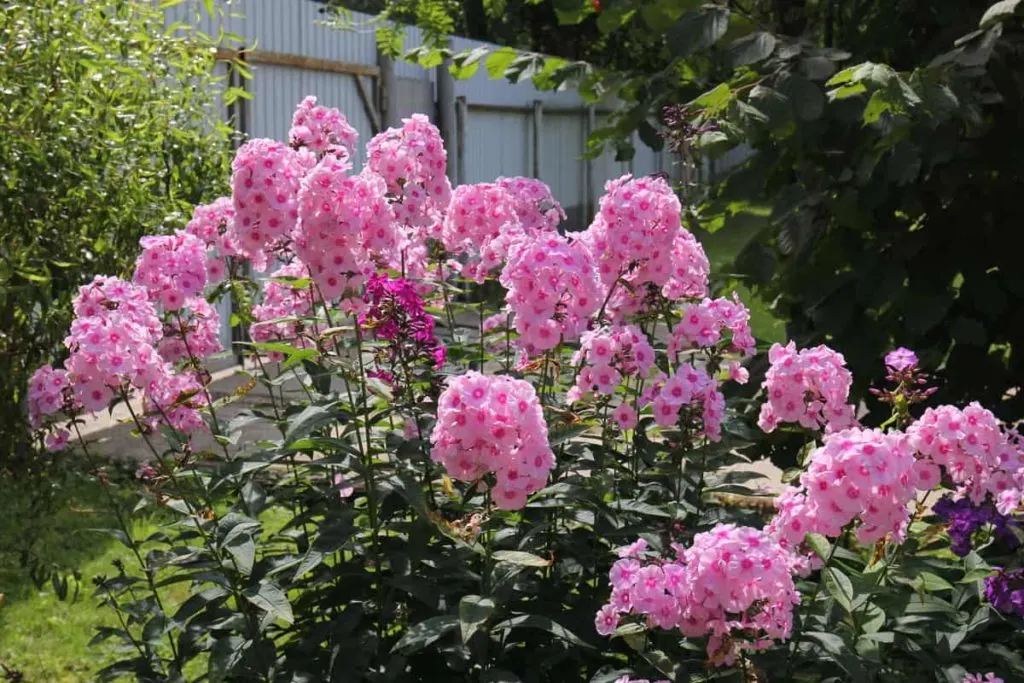
Mature Height: Plants grow 2 to 4 feet (60 to 120 cm) tall.
Bloom: Deliciously aromatic, the puffball, vibrant flower clusters arrive in summer and persist through early fall in pinks, purples, and whites.
Hardiness Zones: Grows well in zones 4 to 8.
Soil & Sun: This tough and beautiful, long lived perennial grows best in full sun. Phlox tolerates heavy, clay soils but performs best with some organic matter mixed in and reasonable drainage.
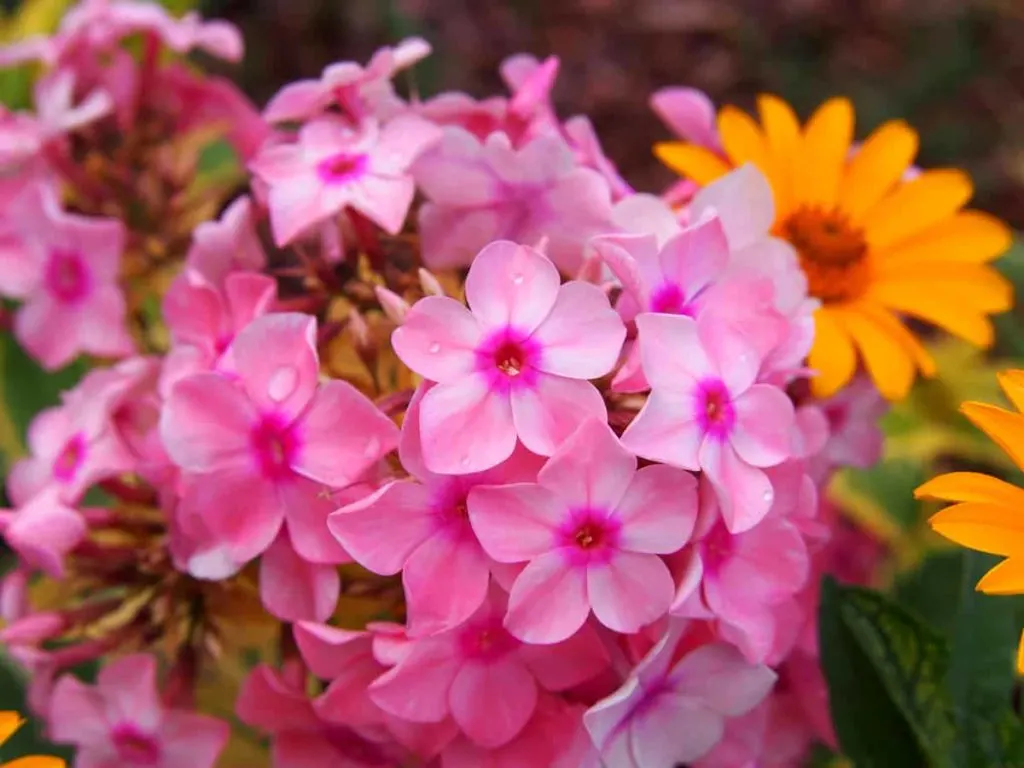
Special Notes: May be susceptible to powdery mildew. If this is a problem in your garden, it may be best to search for resistant cultivars.
11. Feather Reed Grass (Calamagrostis)
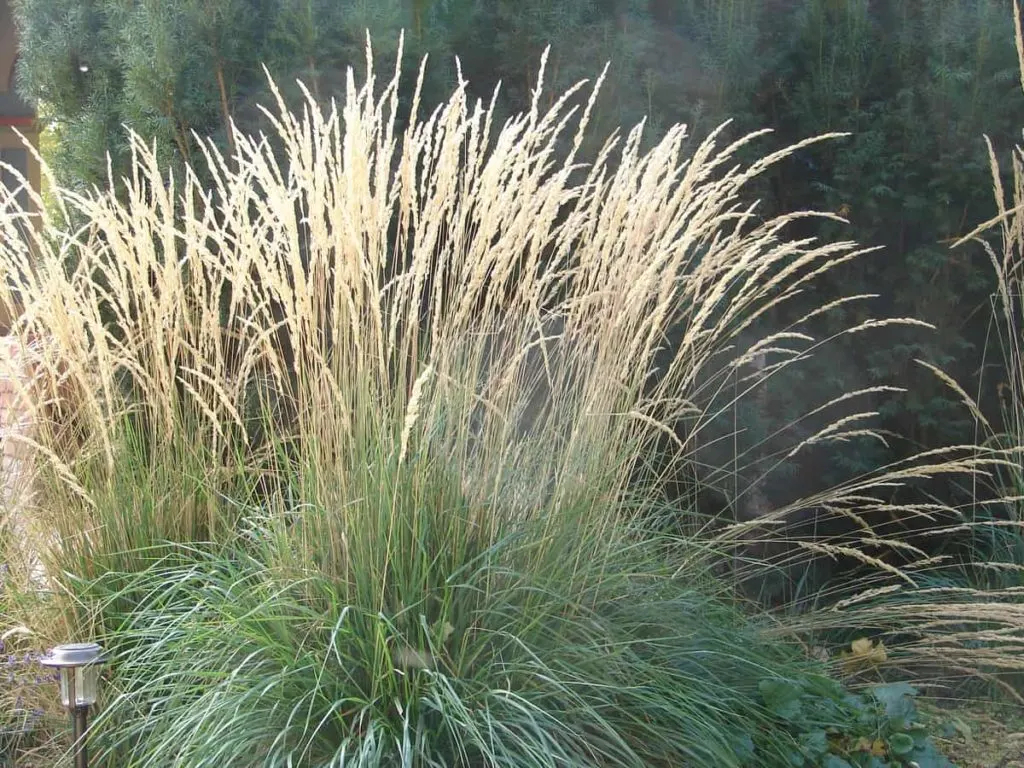
Mature Height: Plants grow 4 to 7 feet (120 to 210 cm) tall.
Bloom: Thelong bloom time of this ornamental grass ranges from May through February, as the large, light purple/pink flowerheads persist through winter.
Hardiness Zones: Hardy in zones 5 to 9.
Soil & Sun: Prefers moist areas in full sun but does appreciate some shade protection in hot dry weather. Can tolerate heavier clay soils better than most ornamental grasses.
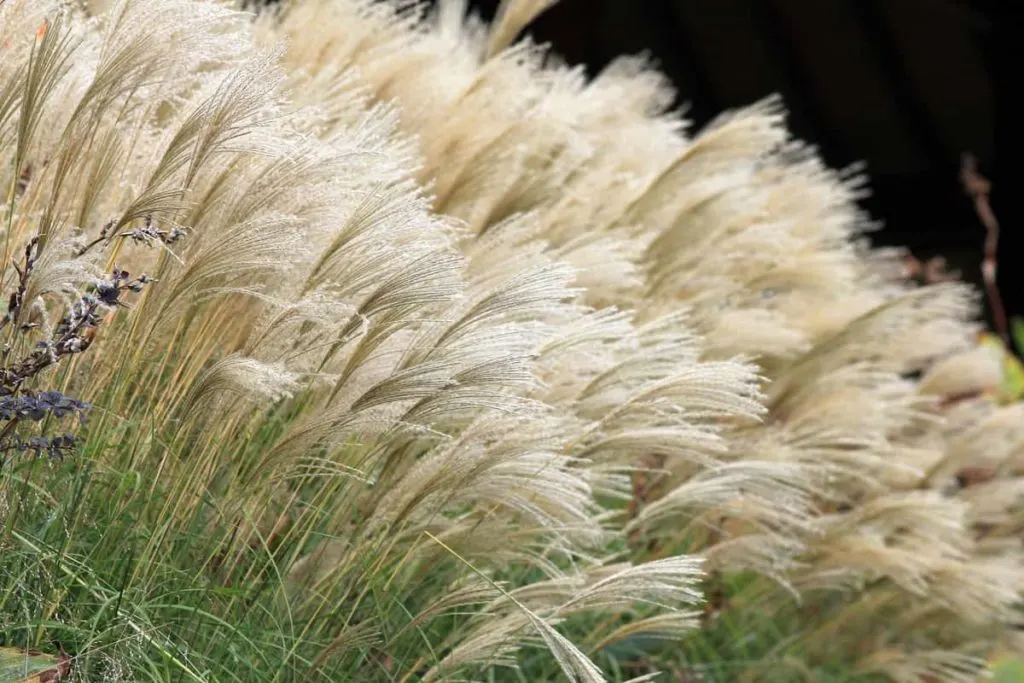
Special Notes: The cultivar “Karl Foerster” is a common feather reed grass available from plant nurseries. A clump-forming perennial, feather reed grass provides winter interest. Cut down to the ground first thing in spring to allow for new season’s growth.
The choices are bountiful when planning the most beautiful tall perennials to grow in your garden. Tall perennials can meet any discerning gardeners list of demands with their multiple uses, long season bloom times, and gifts of architectural structure to the garden.
Pin This To Save For Later
